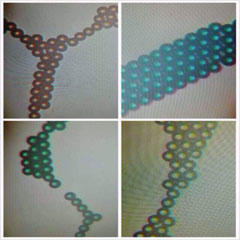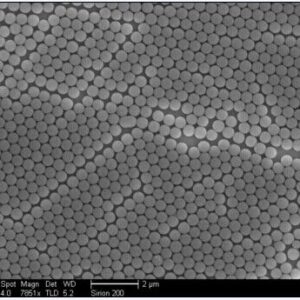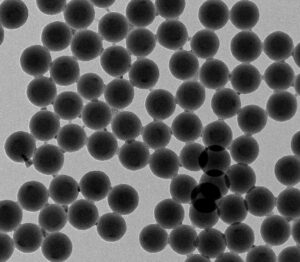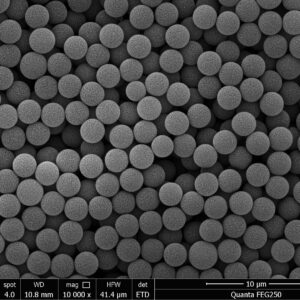Product Category
Hot Products
-
 Fluorescent Carboxyl Microspheres
评分 0 / 5
Fluorescent Carboxyl Microspheres
评分 0 / 5 -
 PMMA Microspheres
评分 0 / 5
PMMA Microspheres
评分 0 / 5 -
 Silica Microspheres
评分 0 / 5
Silica Microspheres
评分 0 / 5 -
 Immune Turbidimetric Microspheres
评分 0 / 5
Immune Turbidimetric Microspheres
评分 0 / 5
Amine Magnetic Beads
SHBC Amine Magnetic Beads are characterized by high magnetic content and monodispersity with a superparamagnetic Fe3O4 core and modified amino groups on the surface. The rich amino groups can be covalently bound to protein and other biological ligands on the surface of the beads under the action of specific reagents, thus realizing rapid separation and enrichment of the target from the sample, which is an important carrier for research in molecular biology, medicine and other related fields.
1.Amine Magnetic Beads Overview
SHBC Amine Magnetic Beads are characterized by high magnetic content and monodispersity with a superparamagnetic Fe3O4 core and modified amino groups on the surface. The rich amino groups can be covalently bound to protein and other biological ligands on the surface of the beads under the action of specific reagents, thus realizing rapid separation and enrichment of the target from the sample, which is an important carrier for research in molecular biology, medicine and other related fields.

2.Product Features
Fast magnetic response and good monodispersity.
Small batch-to-batch variation, high reproducibility.
Good biocompatibility and low cytotoxicity.
Convenient to couple with various biomolecules, easy to operate.
3.Scope of application
Targeted drugs
Detection of bioactive substances
Sample enrichment and separation
4.Product parameters and specifications
Particle size: 200nm 1 μm
Concentration: 50 mg/mL
Solvent: H2O (pH about 4.0)
Surface functional groups and group density: amino (-NH2), >100 μmol/g
Suitable solution: PBS, Tris-HCl, H2O
Iron (Fe) content: 30%
5.Coupling method with biomolecules (glutaraldehyde method)
Surface amino activation of magnetic beads
After mixing the magnetic beads, take an appropriate amount of magnetic beads into a centrifuge tube, wash twice with 20 mM pH 7.4 PBS buffer, and discard the supernatant by magnetic aspiration. Add 15% glutaraldehyde solution, mix the beads well, and react for 1 hour at 25℃ away from light (keep the beads in suspension during the reaction).
Coupling Biomolecules
After activation of the beads, wash twice with 20 mM pH 7.4 PBS buffer, remove the supernatant by magnetic aspiration, add appropriate amount of biomolecules, and disperse the beads with pH 8.0 buffer (add 0.05% Tween 20 to keep the beads dispersed, if necessary), and then react for 3 hrs at 25℃ or overnight at 4℃ under light (Note: Ensure that the beads are uniformly suspended when coupling).
Sealed
After coupling, discard the supernatant, add appropriate amount of PBS buffer (20 mM, pH 7.4) containing 5% BSA to resuspend the beads, and react for 1 hour at 25℃ away from light to seal the unreacted active site, then disperse the beads with PBS buffer (20 mM, pH 7.4) and store at 4℃, and 0.02% sodium azide can be added to inhibit the growth of bacteria if necessary.
6.Precautions
The density of magnetic beads is high, and the beads may sink if left for a long period of time. Therefore, please shake the beads well before use in order to obtain a homogeneous suspension of magnetic beads.
7.Storage conditions and expiration date
Storage conditions: store at 2~8℃, do not freeze or dry.
Translated with DeepL.com (free version)
| Product Number | Product Name | Particle Size |
| MagNH200-10 | Amino Magnetic Beads | 200nm |
| MagNH500-10 | Amino Magnetic Beads | 500nm |
| MagNH1UM-10 | Amino Magnetic Beads | 1μm |
| MagNH2UM-10 | Amino Magnetic Beads | 2μm |
| MagNH3UM-10 | Amino Magnetic Beads | 3μm |
| MagNH10UM-10 | Amino Magnetic Beads | 10μm |
| MagNH20UM-10 | Amino Magnetic Beads | 20μm |
| MagNH30UM-10 | Amino Magnetic Beads | 30μm |
| MagNH50UM-10 | Amino Magnetic Beads | 50μm |
| MagNH100UM-10 | Amino Magnetic Beads | 100μm |
| MagNH200UM-10 | Amino Magnetic Beads | 200μm |
相关产品
-
Hot Sale products
PMMA Microspheres
-
Hot Sale products
Epoxy Magnetic Beads
-
Hot Sale products
Streptavidin Microspheres
-
Hot Sale products
NHS Magnetic Beads




